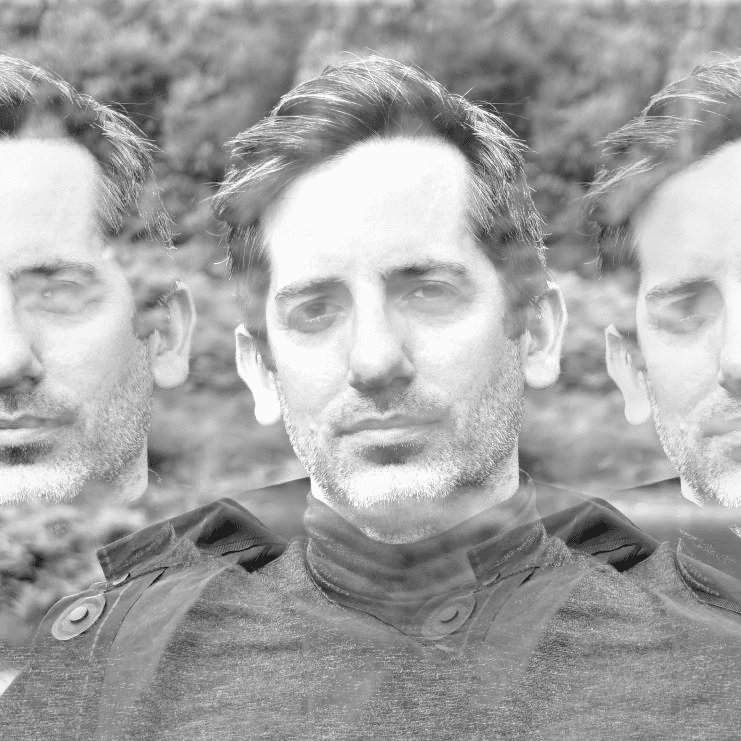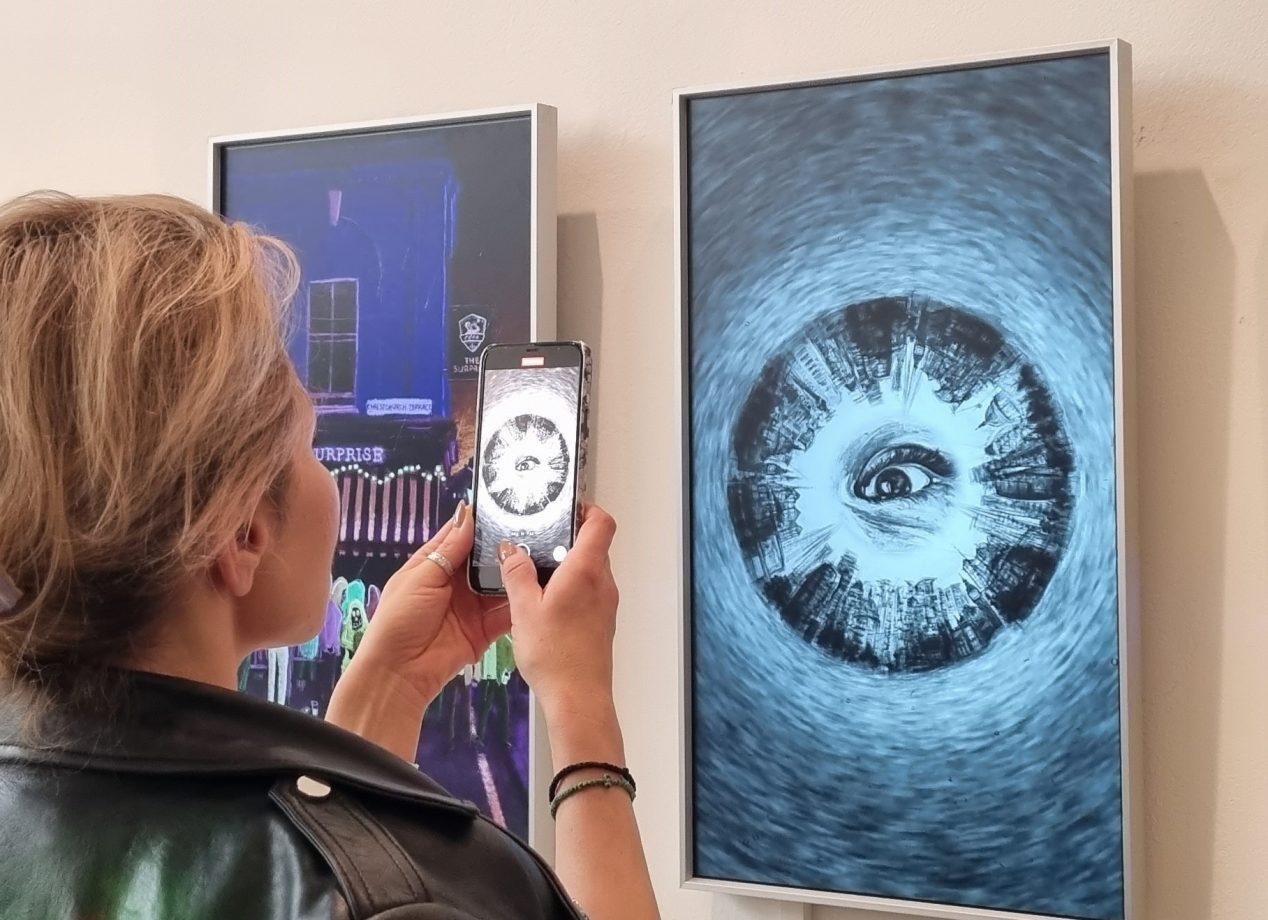Leo Crane is a studio director using Web3 for community building and creative production. Alongside his practice as a painter and animator, Leo leads a number of courses at Sotheby's Institute including Art Business for Artists and Digital Strategies in the Art World. Here, Leo shares insights into his work and explores the intersection of art and technology.
 As an artist and educator, what excites you most about the evolving role of technology in the art world?
As an artist and educator, what excites you most about the evolving role of technology in the art world?
It’s an incredibly exciting time to experiment with digital technology - especially for creatives. We’re only just beginning to understand the potential impact of an emerging Web3, which is loosely defined by a convergence of blockchain, generative AI, and metaverse. In time, this will transform the way we create, experience, share and own art, from painting and pixels to poetry and performance.
Can you share more about your experience using Web3 for community building and creative production?
Before I discovered Web3, I was building a foundational community of artists, collectors and art lovers through exhibitions, events and workshops. Using Web2 technologies like social media, I have been able to connect, share news, interact online and expand my network. In 2021, I discovered blockchain, which opened up a whole new world. I am active in several blockchain communities, where I hold a token to authenticate my role. By participating in events and exhibitions (physical and virtual), I have been able to build my own community of collectors, curators and artists, who own digital editions of my art. The most striking thing is the truly global nature of these communities, where I am as likely to connect with someone in Bali, Nigeria or Iran as I am with a Brit. This leads me to new forms of creativity, collaboration, and a wealth of diverse perspectives.
Could you delve into the details of your animated feature film, The Masterpiece of Tamagata, and how digital technology has played a role in community-building, idea testing, and fundraising throughout its production?
The Masterpiece of Tamagata is a feature animation, which I am co-directing with Ilona Suschitzky. The story is set in ancient Japan, bridging two worlds: the physical world of a feudal society and a boundless, painted world of the imagination. This resonates directly with the idea of a metaverse or virtual world, a place to escape the pressures of ‘reality’. The film is hand-painted using traditional Japanese ink techniques, mostly frame by frame. The imagined world is differentiated through generative AI, bringing an otherworldly quality to the paintings. Last June, we launched the first in a series of digital artworks with an immersive experience in Lisbon and an online showcase on the platform Makersplace. The limited digital edition revealed animated vignettes from our preproduction designs. We were delighted when it sold out in just two hours, galvanising a core group of supporters and raising much-needed production funds. We're currently planning the next collection drop to strengthen the community and help us complete production this year.
Can you tell us about your piece, London Eye the first cryptoart exhibition at London's Saatchi Gallery and how it fits into your exploration of what it means to be human in the age of Web3?
Looking back, I see how much my participation in Web3 communities has influenced the conceptual development of my work. I often find myself in some late night, existential discussion on the nature of the human-machine relationship, which seeps into my artistic practice. London Eye is a good example. This 47-second charcoal animation loop was commissioned by Grida, Director of Galerie Iham in Paris. She was familiar with my work having organised the immersive installation for Tamagata in Lisbon, and so she invited me to be one of eight artists to create a new work inspired by London for the Saatchi Gallery. I wanted to create something that recognised cycles of technological evolution, the histories embedded in the fabric of a city like London, from St Paul’s Cathedral to the Shard, or a phone box or tube station. I created a series of overlapping composite cityscapes surrounded by an ever-flowing river. In the centre, there is a hypervigilant eye, anxious not to miss a single thing and representing a city where technology has led to the highest level of surveillance in the world. The sound design samples the score for Metropolis, perhaps the greatest film to portray the relationship between humans and technology.
Given your involvement in immersive installations, gallery exhibitions, and the use of emerging art technologies, how do these real-world experiences translate into practical insights for students on your courses at Sotheby's Institute of Art?
Many people dismiss Web3 as a fad or scam. Others assume it is only relevant for digital art practitioners. By sharing my own experience and that of expert guest speakers, I want to show how Web3 can support creativity in any discipline or medium. In my own work, I apply digital strategies to physical production, from oil painting to live opera. The experience of these works is ordinarily restricted by venue logistics and the ability of an audience to be present in a specific location at a specific time. Web3 opens up artworks to a much larger, global community, often in partnership with technology companies to evolve the physical into sometime scalable, collectible and easily distributed - all without compromising the original. I’ve seen students grasp these insights, sparking ideas for their own art businesses, especially those who want to be at the forefront of innovation and futureproofing.
How do you see the intersection of art and technology shaping the future of storytelling?
Considering blockchain specifically, the technology is rooted in decentralisation. This philosophy aligns with current art world trends of participation, access and equity, as well as wider storytelling trends of world building, fandom and derivatives. It has the potential to support diverse narrative structures in art, from a fixed work by a single author, to concepts that evolve through participation, code or live data. This is by no means new, but Web3 can fuel fresh approaches and mainstream adoption, especially as we see a new kind of interplay between creative industries across fine art, film, gaming, fashion, music, performance, and design. In many ways, it feels like a new Postmodernism, where remixing and subversion forged a new language, new concepts of authorship, and new stories.
For artists interested in incorporating Web3 technologies into their practice, what advice would you offer?
It’s a really exciting time for art and digital technology, a time for experimenting, building, failing and learning, possibly with a few wins along the way. It’s worth remembering that Web3 is a loose term for a number of nascent technologies, each with its own subcultures and inconsistencies, and each developing at an incredibly fast pace. It’s easy to feel overwhelmed, but there are many supportive communities where people thrive on sharing knowledge and ideas. By sharing your own practice and purpose, you will discover whether these technologies are the right tools to support you.
About Leo Crane
Leo Crane is an artist, producer and consultant. He has over 20 years’ experience with some of the UK’s greatest cultural organizations, including the V&A, British Library, Royal Institute of British Architects and Dulwich Picture Gallery. He helps organizations define and articulate their vision, creating strategies, implementing work plans and leading masterclasses. Alongside this, he has his own practice as an animator, painter and co-founder of creative studio Figuration. He uses Web 3 technology to elevate his work, including the production of the first ever live opera NFT, which premiered in Los Angeles in March 2022.
